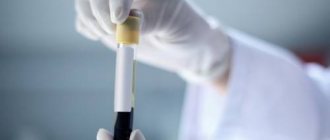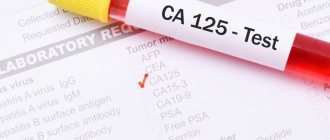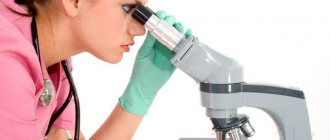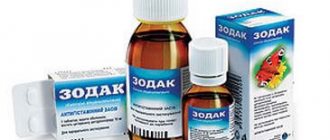Triglycerides in men are one of the markers of cardiovascular diseases. Along with a blood test for cholesterol, regular determination of the level of neutral fats is necessary for the early detection of atherosclerosis.
The male body differs in many ways from the female body, including the characteristics of lipid metabolism. What is considered normal triglycerides, how to control the concentration of neutral fats, what deviations from the norm indicate, what to do if the levels are elevated, you will learn from our article.
What are triglycerides?
The main components of lipid complexes are triglycerides and cholesterol, which move throughout the body along with the bloodstream.
The lipoproteins themselves are divided into separate fractions:
- Low-density lipoproteins (LDL) are “harmful” cholesterols that settle on the walls of blood vessels and provoke atherosclerosis;
- Very low density lipoproteins (VLDL) – contain the most triglycerides;
- High-density lipoproteins (HDL) are “good” cholesterols that help transport excess fat to the liver and remove it from the body naturally.
Triglyceride levels are influenced by a wide range of factors, including:
- Age category;
- Gender;
- Lifestyle;
- Hereditary disposition;
- Concomitant diseases that provoke lipid metabolism disorders.
The value of triglycerides in the blood can vary from 0.3 to 3.7 mmol/liter, depending on the above factors, but the most favorable value is 1.8 mmol/liter.
Before fast food appeared, a TG level of 3 mmol/liter was considered normal.
However, medical researchers have confirmed that the risk of progression of atherosclerotic processes in a modern person appears already at 2 mmol/liter.
When making a diagnosis, the doctor relies not only on the triglyceride level. It is important to take into account the levels of HDL and LDL, as well as total cholesterol, which are determined by the lipid profile.
Triglycerides are normal in men by age (table)
This indicator is not constant, since its value changes under the influence of many factors, which is inherent in biochemical laboratory research. There is also a significant difference (almost 1.5 times).
For a better understanding, the permissible triglyceride values for men and women by age are contained in the table below.
| Age category (years) | Male norm | The norm for women |
| 0-10 | 0,34 – 1,13 | 0,40 – 1,24 |
| 10-15 | 0,39 – 1,41 | 0,42 – 1,48 |
| 15-20 | 0,45 – 1,81 | 0,40 – 1,53 |
| 20-25 | 0,50 – 2,27 | 0,41 – 1,48 |
| 25-30 | 0,52 – 2,81 | 0,42 – 1,63 |
| 30-35 | 0,56 – 3,01 | 0,42 – 1,63 |
| 35-40 | 0,61 – 3,62 | 0,44 – 1,70 |
| 40-45 | 0,62 – 3,61 | 0,45 – 1,99 |
| 45-50 | 0,65 – 3,70 | 0,51 – 2,16 |
| 50-55 | 0,65 – 3,61 | 0,52 – 2,42 |
| 55-60 | 0,65 – 3,23 | 0,59 – 2,63 |
| 60-65 | 0,65 – 3,29 | 0,63 – 2,70 |
| 65-70 | 0,62 – 3,94 | 0,68 – 2,71 |
From the above table it can be seen that the norms of triglyceride in the blood of women and men are constantly changing, but the former have a higher rate.
In a situation where a study of serum levels for a lipid profile shows an approach to a value of 5.6 mmol/liter, it is recommended to urgently contact a hospital specialist who will determine exactly what caused this increase in triglycerides in the blood.
Quite often, an increased TG level is observed after the holidays, when people consume more food at feasts and drinks that negatively affect the circulatory system.
Regardless of the factor that increases triglycerides, it is necessary to monitor this value, and if pathological conditions that provoke its increase are detected, effective treatment is applied.
Fat metabolism in the liver and triglyceride formation
Risk factors
But if a person has not only physiological, but also constant hyperlipidemia, then it is a significant risk factor for diseases and pathological conditions such as atherosclerosis, hypertension, and coronary heart disease. Particularly dangerous is the combination of acquired or hereditary hyperlipidemia with:
- physical inactivity or sedentary lifestyle;
- overweight;
- the presence of bad habits;
- high risk of developing diabetes mellitus, that is, impaired glucose tolerance, not to mention the presence of diabetes mellitus.
Another risk factor for cardiovascular pathology can be considered a high level of bad cholesterol, the presence of previous cardiovascular diseases in relatives and other family members, especially if we are talking about a male patient and cases of diseases with male relatives under 55 years of age. In a sense, constant consumption of fatty foods, which is usually determined by national cuisine or family traditions, can be considered a risk factor.
Reasons for the increase
A change in indicators to a lesser or greater extent certainly indicates violations that occur in the human body.
The main reasons for a decrease or increase in triglycerides in the blood are given in the table below.
| Promotion | Decrease |
| · Excessive excess weight; | · Insufficient body weight; |
| · Insufficient production of thyroid hormones; | · Chronic lung pathologies; |
| · Diabetes; | · Increased production of thyroid hormones; |
| · Liver pathologies and urinary tract disorders, which lead to stagnation of bile in the liver. These are viral hepatitis and blockage of the bile ducts; | · Burns and traumatic situations; |
| · Pathologies of the heart and blood vessels (atherosclerotic processes, high blood pressure, cardiac ischemia); | · Consumption of vitamin C and fish oil; |
| · Increased uric acid levels; | · Heart attack; |
| Inflammation of the pancreas; | · Insufficient production of lipoproteins; |
| · Kidney pathologies; | · Improper absorption of nutrients by the gastrointestinal tract; |
| · Use of certain types of medications (corticosteroids, diuretics, beta blockers); | · Vegetarian diet. |
| · Alcoholic drinks and cigarettes. |
In most cases, the study of triglycerides is not carried out separately, but is determined when submitting a lipid profile, which includes HDL, LDL, LDL, total cholesterol (TC) and atherogenic coefficient (AA).
Only based on the ratio of all these indicators can developing atherosclerosis be determined.
The main reason for elevated levels of triglycerides in the blood is an unhealthy diet containing large amounts of fatty foods. Excess food consumed is deposited in adipose tissue in the form of triglycerides, which break down into fatty acids and glycerol.
This process helps the body make “reserves” in case of extreme conditions for it.
It is important to understand that an increase in triglycerides is not a pathological prerequisite for the development of an atherosclerotic process.
The disease is triggered by an imbalance between “good” and “bad” cholesterol.
If you express a desire to become a donor, you will need to follow a low-cholesterol diet several days before the study, since biological material with a high level of fat content is not suitable for transfusion.
Elevated levels of triglycerides in the blood are caused by poor diet.
How to lower the level?
Initially, people who want to reduce the concentration of this component in the blood must adhere to a special low-calorie diet.
It is recommended to adhere to the following dietary guidelines:
- It is necessary to replace fast carbohydrates with complex ones . According to studies, men who limit their glucose intake and replace it with polysaccharides are least likely to have elevated triglycerides;
- We reduce the amount of foods rich in saturated fats, replacing them with vegetable ones . This means that you will need to minimize the consumption of lard, fatty meat and fish, dairy products with a fat content of more than 1%, cheeses, sunflower oil, etc. While the diet should contain a large amount of fresh vegetables and fruits, legumes, grains, and other foods containing polyunsaturated fatty acids;
- Remove mayonnaise, spread, margarine and other products rich in trans fats from your diet , replacing them with olive oil.
In addition to proper nutrition, to lower triglyceride levels, men are advised to adhere to the following guidelines:
- Avoid alcoholic beverages and cigarettes, which upset the balance between “bad” and “good” cholesterol, causing metabolic processes to disturb;
- Lead a more active lifestyle. Men who lead a sedentary lifestyle suffer from elevated triglycerides many times more often. It is recommended to engage in active sports (running, swimming, athletics, football, dancing, etc.);
- Maintain water balance. You need to drink at least 1.5 liters of clean drinking water per day, which will help keep your blood counts normal and prevent it from thickening;
- Treat infectious and inflammatory diseases in a timely manner.
In the initial stages of deviation, the above measures will be enough to effectively lower triglycerides.
However, if the matter has gone much further, then a lipid profile is prescribed, on the basis of which the body is examined and effective treatment is prescribed.
We reduce the amount of foods rich in saturated fats, replacing them with vegetable ones
Supplements
Certain types of triglycerides have beneficial properties. This explains the fact that they are included in the special diet of men whose bodies are not able to absorb fats naturally.
The main components of nutritional mixtures used for tube feeding of patients with cancer and mental illness are:
- Medium chain triglycerides;
- Unsaturated fatty acids (Omega-3 and -6);
- Proteins;
- Carbohydrates;
- Various vitamins.
The use of medium chain triglycerides constantly causes a lot of controversy among men who use them:
- Some believe that this is a quick way to lose weight;
- And others say that such triglycerides accelerate the growth of muscle mass, provide the body with additional energy, which helps to achieve athletic heights.
Both of the above points are only subjective opinions that have not been proven by science. Before use, it is recommended to consult a specialist.
Many athletes consume polyunsaturated fatty acids in the form of Omega-3 and -6. Their usefulness is due to the fact that they are not synthesized by the body on its own, but it desperately needs them.
Such acids help lower the level of “bad” cholesterol, which counters the progression of atherosclerotic processes, high blood pressure, and other pathologies of the heart and blood vessels.
In fact, Omega-3 is the fish oil that was previously given to all children.
These types of acids are extremely beneficial for the male body and are found in seafood, rapeseed, coconut or soybean oil, etc.
Safe diet
What can you eat without thinking? This:
- various bran and wholemeal bread, including yesterday's and peeled bread;
- various types of gray porridges, muesli and cereals, brown varieties of unprocessed rice, rye crackers;
- among dairy products, low-fat yoghurts, whey, fresh homemade cheese like Adyghe cheese, prepared recently, will be very useful;
- soups are preferably vegetable, with water, or with chicken broth if you use fillet or skinless breast;
- seafood you can eat are scallops and oysters;
- Turkey, veal, and rabbit meat are healthy. Young and lean lamb, which has a very low amount of cholesterol, is very useful, and there is a corresponding video about this.
- You can eat any baked fish, including fatty varieties, since fish is a source of unsaturated fats that have a positive effect on the cardiovascular system;
- All vegetable oils are allowed, except peanut and palm, it is advisable to regularly consume flaxseed, olive, and corn;
- all fruits and vegetables are indicated, if the patient does not have an increased concentration of uric acid and does not suffer from gout, then legumes are also allowed; you can eat absolutely all fruits, both fresh and dried, canned fruits, but only without sugar. It is only necessary to significantly limit the jam, but again due to the presence of sugars. But if sugar is found in organic form in food, then it can be consumed. This applies to dried fruits, sweet fruits and grapes;
- You should drink more fluid - fresh fruit and diluted juices, green tea, mineral water, in the absence of contraindications, edema and heart failure.
In any case, for a patient with high triglycerides and cholesterol, the basis of nutrition is a vegetable and fruit diet, enriched with cellulose and plant fibers, which improve intestinal digestion, prevent the development of dysbiosis, and give a feeling of satiety. You can call bran, apple pectin. It is also advisable to replace meat dishes with fish, fried dishes with boiled and steamed ones.
What to do if, with the help of a diet within 3-4 months, it is not possible to reduce the concentration of triglycerides and cholesterol? It all depends on the dynamics. If the patient notes, albeit slowly, but still a progressive decrease in triglycerides, then the diet should be continued. You should add increased physical activity to it, and then soon all indicators will return to normal, as well as your well-being.
If the diet fails to achieve any significant reduction in indicators, then additional drug treatment is required. For this purpose, there are groups of drugs, such as fibrates, statins, which must be taken under medical supervision and taking into account contraindications.
It is important to understand, especially for domestic readers, that a doctor does not have to start treating high fats and cholesterol with medications. It’s the other way around: medications need to be added after the patient has begun to deal with his problem on his own.











